Volunteers form the backbone of thriving communities and successful nonprofit organizations. According to Independent Sector, volunteer time is valued at over $33 per hour, representing extraordinary economic contribution beyond the incalculable social impact volunteers create through their service. Despite this immense value, volunteer retention remains a persistent challenge, with research indicating that approximately 55% of volunteers do not return after their first year of service.
Recognition plays a critical role in volunteer retention and engagement. The Corporation for National and Community Service reports that volunteers who feel valued and appreciated demonstrate significantly higher retention rates, greater engagement levels, and increased likelihood of recruiting additional volunteers from their networks.
Volunteer and service recognition displays provide organizations with powerful tools to honor contributors through permanent, visible tributes that celebrate service while inspiring others to join missions. Whether through interactive touchscreen displays in organizational facilities, digital platforms accessible online, or hybrid approaches combining physical and virtual recognition, modern technology enables comprehensive acknowledgment that traditional methods cannot match.
This comprehensive guide explores how organizations can implement effective volunteer and service recognition displays, examining content strategies, technology options, implementation best practices, and proven approaches that strengthen volunteer cultures while celebrating the individuals who make organizational success possible.
Understanding Volunteer and Service Recognition
Volunteer recognition extends far beyond simple thank-you gestures—it represents strategic investment in the relationships that sustain organizational missions.
The Strategic Importance of Volunteer Recognition
Volunteer programs face consistent challenges across nonprofit sectors: recruitment difficulties, retention struggles, engagement gaps, and recognition fatigue. Effective recognition addresses multiple organizational needs simultaneously:
Retention and Sustained Engagement: Research consistently demonstrates that volunteers who receive meaningful recognition maintain higher retention rates than those receiving minimal acknowledgment. Recognition validates the significance of volunteer contributions, reinforcing decisions to invest time and energy in organizational missions.
According to VolunteerMatch research, meaningful appreciation ranks among the top factors volunteers cite when explaining why they continue service with specific organizations. Recognition creates emotional connections between volunteers and missions, transforming transactional relationships into committed partnerships.
Recruitment Through Example: Visible volunteer recognition serves powerful recruitment functions. When potential volunteers see existing contributors honored prominently, it communicates organizational values while demonstrating that service receives genuine appreciation. Recognition displays featuring diverse volunteers across various roles provide concrete examples helping potential volunteers envision themselves contributing.
Organizations implementing prominent volunteer recognition frequently report improved recruitment outcomes, with existing volunteers more actively encouraging friends and family to join missions they know appreciate service.

Mission Connection and Purpose: Volunteer recognition creates opportunities to connect individual service to broader mission impact. Recognition content highlighting specific accomplishments, beneficiaries served, or organizational outcomes achieved through volunteer contribution helps volunteers understand the tangible difference their service creates.
This connection to purpose strengthens volunteer motivation and engagement, particularly for episodic volunteers who may not witness long-term mission impact directly through their limited involvement.
Types of Service Recognition Displays Honor
Comprehensive volunteer recognition acknowledges diverse contribution types ensuring various service forms receive appropriate acknowledgment:
Direct Service Volunteers: Recognition of volunteers providing direct services to beneficiaries—mentors working with youth, tutors assisting students, meal servers feeding communities, healthcare volunteers supporting patients, crisis hotline volunteers providing support, and countless others delivering hands-on assistance that defines nonprofit missions.
Administrative and Operations Support: Acknowledgment of volunteers managing databases, handling communications, providing technical assistance, staffing offices, coordinating events, maintaining facilities, and performing essential operational functions enabling organizations to direct limited staff resources toward mission-critical activities.
Governance and Leadership: Recognition of board members, committee chairs, task force leaders, and volunteers providing strategic guidance, policy oversight, fundraising leadership, and organizational governance ensuring nonprofits maintain accountability while advancing missions effectively.
Professional Skills and Expertise: Celebration of pro bono professional services—attorneys providing legal assistance, accountants offering financial guidance, marketing professionals contributing communications expertise, technology specialists donating technical support, and skilled professionals sharing specialized knowledge organizations cannot afford to purchase.
Advocacy and Awareness: Acknowledgment of volunteers raising awareness, educating communities, advocating for causes, representing organizations at events, recruiting additional volunteers, and amplifying missions through their networks and influence.

Organizations implementing comprehensive recognition discover that celebrating diverse contribution types validates all volunteers, preventing perceptions that only certain service forms receive appreciation. For guidance on recognizing various achievement types, explore approaches for community honors displays that acknowledge diverse community contributions.
Volunteer Recognition Principles and Best Practices
Effective volunteer recognition follows proven principles that maximize impact while avoiding common pitfalls:
Timely Recognition: Acknowledgment delivered promptly after service creates stronger impact than delayed recognition. While annual volunteer appreciation events serve important purposes, they cannot substitute for ongoing acknowledgment throughout service periods.
Specific and Personalized: Recognition highlighting specific contributions resonates more deeply than generic appreciation. Describing particular accomplishments, naming individuals affected, or quantifying outcomes achieved demonstrates genuine understanding of volunteer impact rather than perfunctory acknowledgment.
Public and Private Balance: While public recognition creates visibility and inspiration, some volunteers prefer private acknowledgment. Comprehensive recognition programs incorporate both approaches, offering public celebration for those comfortable with visibility while respecting preferences of volunteers who contribute without seeking attention.
Authentic and Sincere: Volunteers distinguish genuine appreciation from obligatory formality. Recognition must communicate authentic gratitude reflecting true organizational appreciation for volunteer contributions rather than checking recognition boxes.
Inclusive and Equitable: Recognition should honor all volunteers regardless of contribution magnitude, ensuring major donors and board members don’t overshadow frontline volunteers providing direct services. Equitable recognition prevents perceptions that only certain volunteers receive appreciation while others are taken for granted.
Technology Options for Volunteer Recognition Displays
Modern technology provides diverse options for implementing volunteer recognition displays matching organizational needs, budgets, and technical capabilities.
Interactive Touchscreen Recognition Displays
Interactive touchscreen kiosks and wall-mounted displays offer sophisticated recognition capabilities in physical organizational facilities.
Hardware Components: Physical recognition displays typically utilize commercial-grade touchscreen monitors (43-75 inches), mounting systems (wall-mounted or freestanding kiosks), media players or embedded computers running recognition software, network connectivity for content updates, and protective enclosures for public-access environments.
Commercial touchscreens designed for continuous operation in public spaces cost more than consumer displays but provide significantly longer operational life, brighter screens visible in ambient light, commercial warranties, and robust construction withstanding frequent public interaction.
Software and Content Management: Recognition software enables organizations to manage volunteer profiles, upload photographs and videos, organize content by service categories or achievement types, provide search and filtering capabilities, and update content remotely without physical display access.
Modern platforms like Rocket Alumni Solutions offer intuitive content management requiring no technical expertise, allowing nonprofit staff to maintain current recognition content through simple web interfaces similar to social media platforms.
Interactive Features: Touchscreen displays enable users to browse volunteer profiles, search by name or service category, watch video testimonials, view photo galleries showing volunteers in action, read impact stories, and discover how to join volunteer programs themselves.
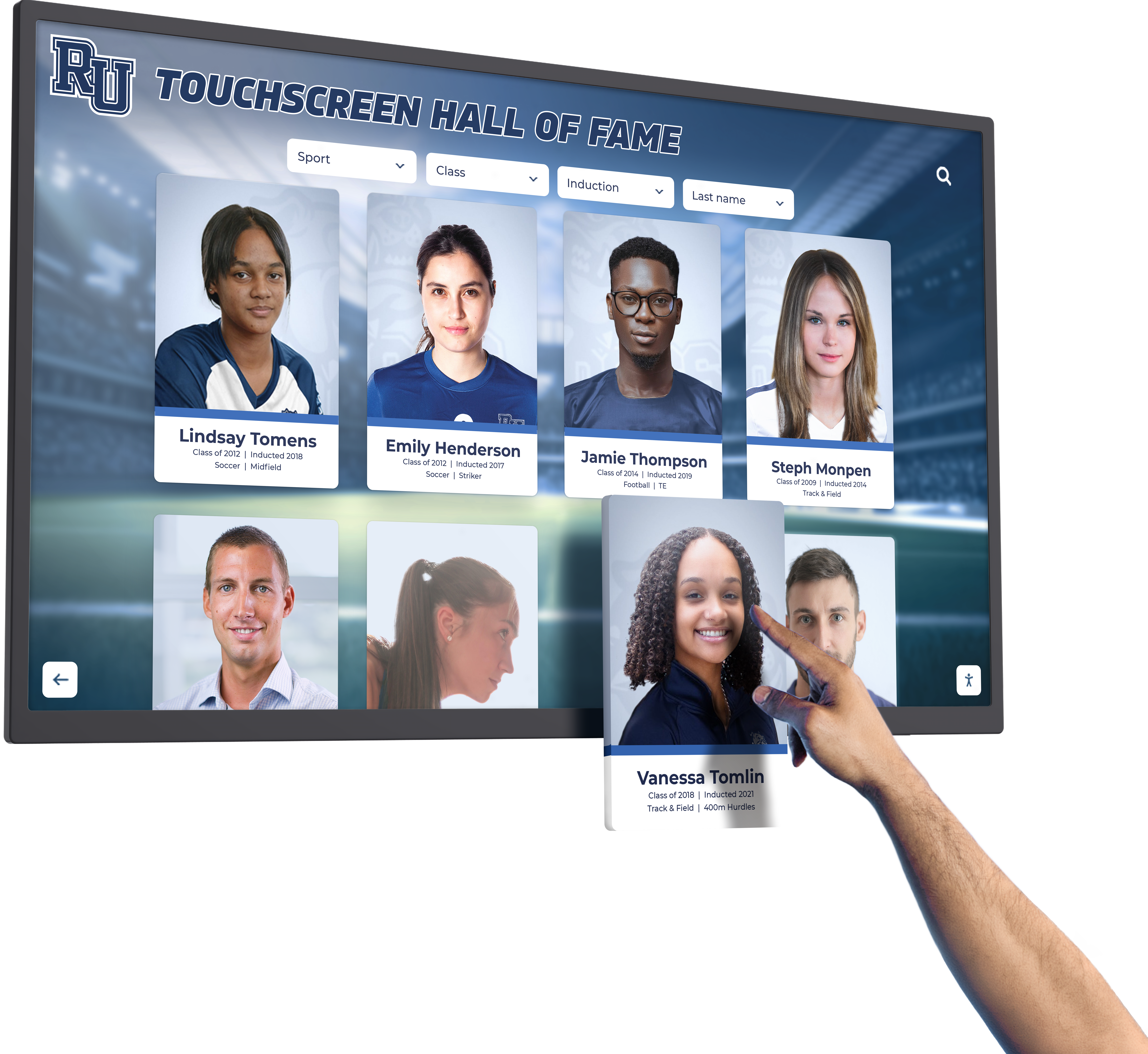
Interactive engagement creates memorable experiences compared to static displays, with research indicating that interactive content receives significantly longer attention and higher retention than passive viewing. For comprehensive guidance on interactive technology, examine touchscreen software solutions designed specifically for recognition applications.
Online Volunteer Recognition Platforms
Web-based recognition platforms provide accessibility extending beyond physical locations, serving volunteers, donors, and community members regardless of geographic location.
Accessibility Advantages: Online platforms allow volunteers to access recognition from homes, workplaces, or mobile devices, ensuring visibility beyond visitors to organizational facilities. Remote accessibility particularly benefits organizations with geographically dispersed volunteers or limited physical facilities where permanent displays prove impractical.
Unlimited Capacity: Digital platforms accommodate unlimited volunteer profiles, removing capacity constraints inherent in physical displays. Organizations can recognize every volunteer regardless of service duration or contribution magnitude without space limitations requiring difficult decisions about whom to feature.
Rich Multimedia Content: Web platforms support comprehensive volunteer profiles including biographical information, service histories, photographs showing volunteers engaged in work, video interviews allowing volunteers to share experiences, testimonial collections from beneficiaries and colleagues, and achievement timelines documenting service progression.
Social Sharing and Engagement: Online recognition enables volunteers to share profiles through social networks, email links to family and friends, and embed content in personal websites or digital resumes. This social amplification extends organizational visibility while allowing volunteers to celebrate their service recognition.
Search and Discovery Features: Robust search capabilities allow users to find specific volunteers, filter by service categories, browse by recognition year, discover volunteers with particular skills or interests, and explore featured volunteers highlighted through rotation algorithms ensuring all profiles receive visibility.
Hybrid Recognition Approaches
The most effective volunteer recognition strategies combine physical displays in organizational facilities with online platforms accessible anywhere, leveraging unique advantages of each approach.
Physical Display Benefits: Touchscreen kiosks in organizational lobbies, community centers, or volunteer hubs create prominent visibility among visitors naturally gathering in those spaces. Physical presence communicates organizational commitment to recognition while providing interactive experiences for walk-in traffic.
Online Platform Benefits: Web-based access serves volunteers unable to visit physical facilities regularly, provides unlimited content capacity, enables social sharing amplifying recognition reach, and allows continuous content updates without physical display maintenance.
Integrated Content Management: Modern recognition platforms manage content centrally, automatically synchronizing updates across physical displays and online platforms. Organizations add volunteer profiles once, immediately appearing on all recognition channels without duplicate content management.
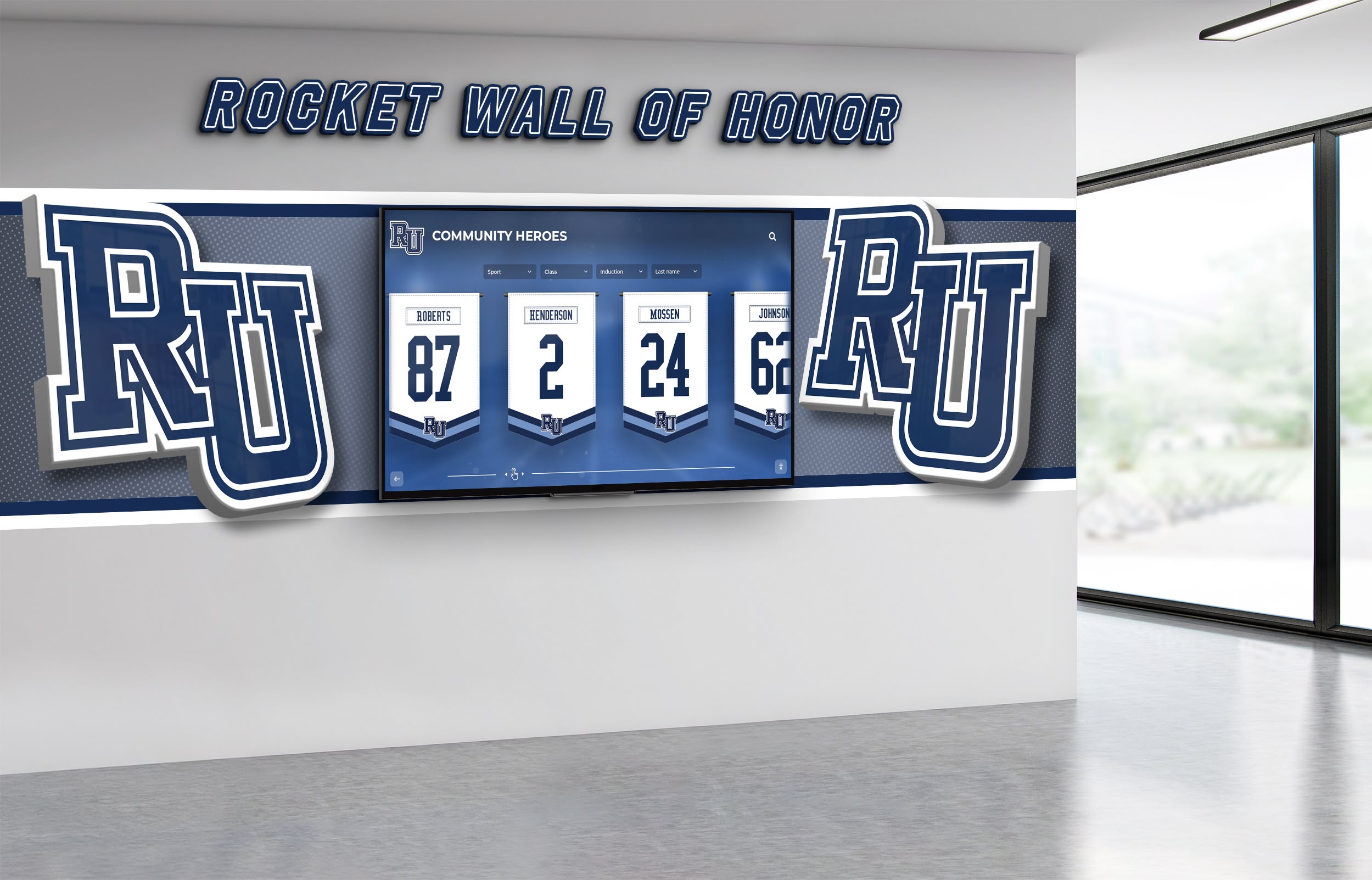
Hybrid approaches maximize volunteer recognition investment by serving diverse audiences through appropriate channels while maintaining content consistency across all touchpoints. Understanding digital recognition display benefits helps organizations evaluate how technology enhances traditional recognition methods.
Content Strategies for Volunteer Recognition Displays
Compelling content transforms recognition displays from impressive technology into meaningful tributes that genuinely honor volunteers while inspiring others.
Essential Volunteer Profile Components
Comprehensive volunteer profiles balance professional acknowledgment with personal elements that help viewers connect with individual volunteers as people.
Basic Information: Volunteer profiles should include full name (with preferred name or nickname), years of service or service date ranges, primary service areas or roles, total volunteer hours when tracked, and current involvement status (active, alumni, occasional).
Service Descriptions: Clear explanation of volunteer contributions including specific roles fulfilled, programs supported, populations served, skills contributed, and responsibilities undertaken. Service descriptions should avoid generic language in favor of specific details illustrating actual volunteer work.
Impact and Achievements: Documentation of measurable outcomes when possible—number of youth mentored, meals served, hours contributed, funds raised, projects completed, or beneficiaries assisted. Impact quantification helps volunteers understand the tangible difference their service creates while demonstrating organizational appreciation for specific contributions.
Personal Elements: Information humanizing volunteers and revealing motivation—why they began volunteering, what aspects of service they find most rewarding, personal connections to organizational missions, memorable experiences during service, and interests or hobbies outside volunteer work.
Personal elements create emotional connections with viewers while helping potential volunteers envision themselves in service roles by seeing people like themselves contributing.
Visual Content: High-quality photographs showing volunteers engaged in service, professional headshots for formal contexts, action photos capturing volunteers working with beneficiaries or fellow volunteers, and group photographs showing volunteer teams collaborating.
Photographs significantly enhance recognition impact compared to text-only profiles, with visual content creating immediate emotional connections and making recognition more memorable.
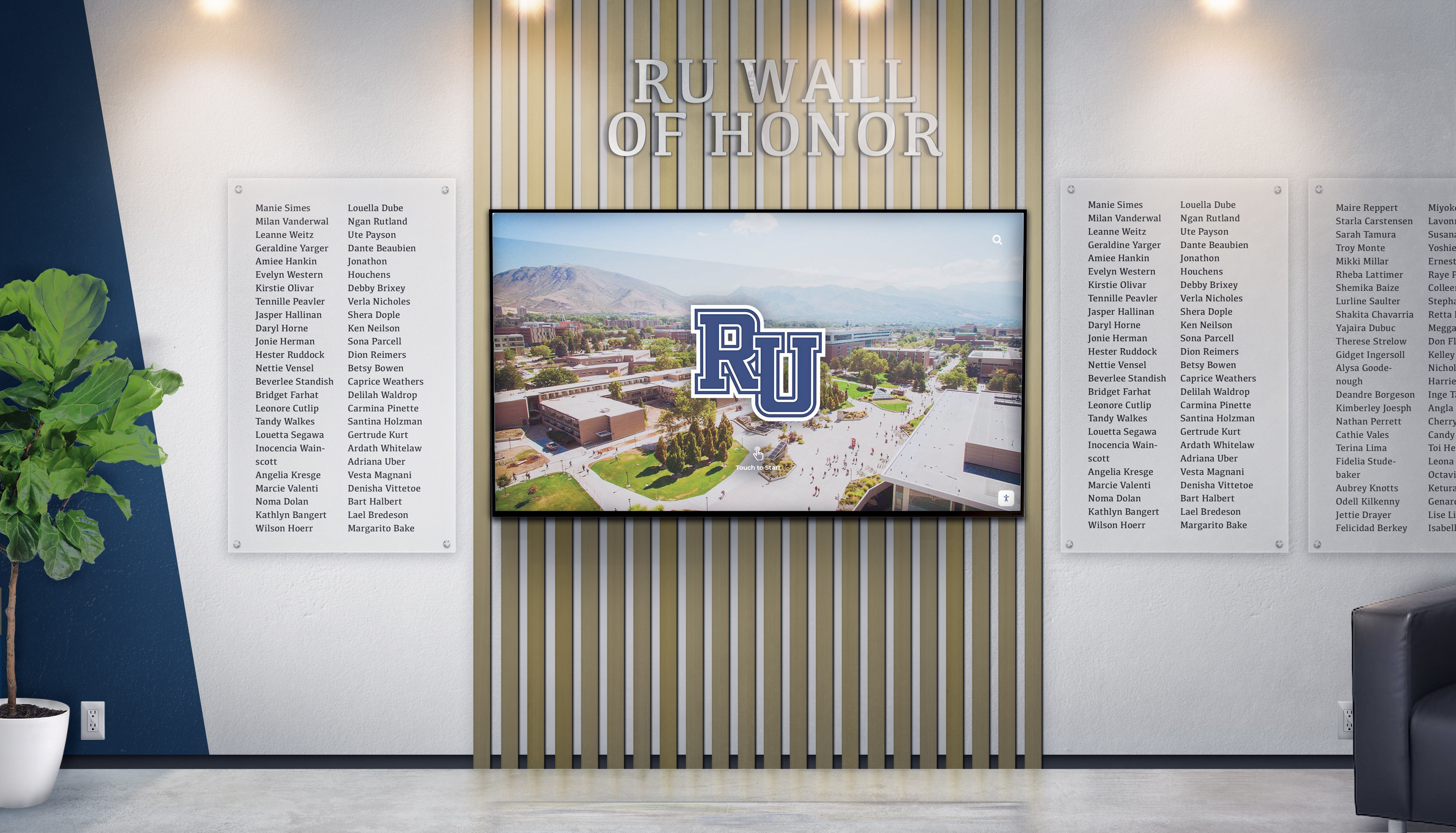
Testimonials and Appreciation: Inclusion of testimonial quotes from beneficiaries, fellow volunteers, staff members, or organizational leaders expressing appreciation and describing volunteer impact. Testimonials from multiple perspectives provide powerful validation of volunteer significance.
Video Content for Volunteer Recognition
Video creates particularly powerful emotional connections in volunteer recognition, bringing volunteers’ voices and personalities to life in ways static content cannot match.
Volunteer Interview Videos: Short 60-90 second videos featuring volunteers discussing why they volunteer, memorable service experiences, personal connections to missions, or advice for potential volunteers provide authentic insight into volunteer perspectives and motivations.
Interview videos humanize volunteers while providing inspiring examples for potential volunteers considering service. Organizations can film multiple volunteers during single sessions, building video libraries showcasing diverse volunteer experiences and demographics.
Service Action Footage: B-roll footage showing volunteers actively engaged in service—tutoring students, preparing meals, assisting event attendees, working with beneficiaries—demonstrates work in action rather than simply describing contributions.
Action footage creates visceral understanding of volunteer roles, particularly valuable for recruiting new volunteers who may not understand what specific service positions entail.
Beneficiary Testimonials: Videos featuring individuals or communities served by volunteers expressing appreciation and describing impact create powerful emotional content. Beneficiary voices validate volunteer significance while demonstrating mission fulfillment.
Recognition Ceremony Highlights: Footage from annual volunteer recognition events, award presentations, or appreciation celebrations preserves ceremonial moments while extending recognition visibility beyond event attendees to online audiences discovering content later.
For guidance on creating compelling video content, explore strategies for video content in digital recognition displays that maximize impact while managing production complexity.
Organizing Recognition by Service Milestones
Milestone-based recognition acknowledges volunteer commitment progression, celebrating accumulated service across time.
Service Anniversary Recognition: Celebrating volunteers reaching milestone anniversaries—1 year, 5 years, 10 years, 20+ years—provides systematic recognition honoring commitment longevity. Anniversary profiles might feature career retrospectives, historical photos showing volunteers across their service years, reflections on organizational changes witnessed, and accumulated impact statistics.
Hour-Based Milestones: For organizations tracking volunteer hours, milestone recognition at significant hour thresholds—100 hours, 500 hours, 1,000 hours, 5,000+ hours—quantifies extraordinary time commitments. Hour-based recognition particularly suits organizations with volunteers contributing various service frequencies, ensuring both weekly regulars and occasional episodic volunteers can achieve recognition.
Achievement-Based Recognition: Celebrating specific accomplishments—projects completed, beneficiaries served, funds raised, or goals achieved—connects recognition to mission outcomes rather than simply acknowledging time investment.
Leadership Progression: Recognizing volunteers who progress from frontline service to leadership roles—committee chairs, board members, program coordinators, volunteer trainers—celebrates capacity building and organizational investment in volunteer development.
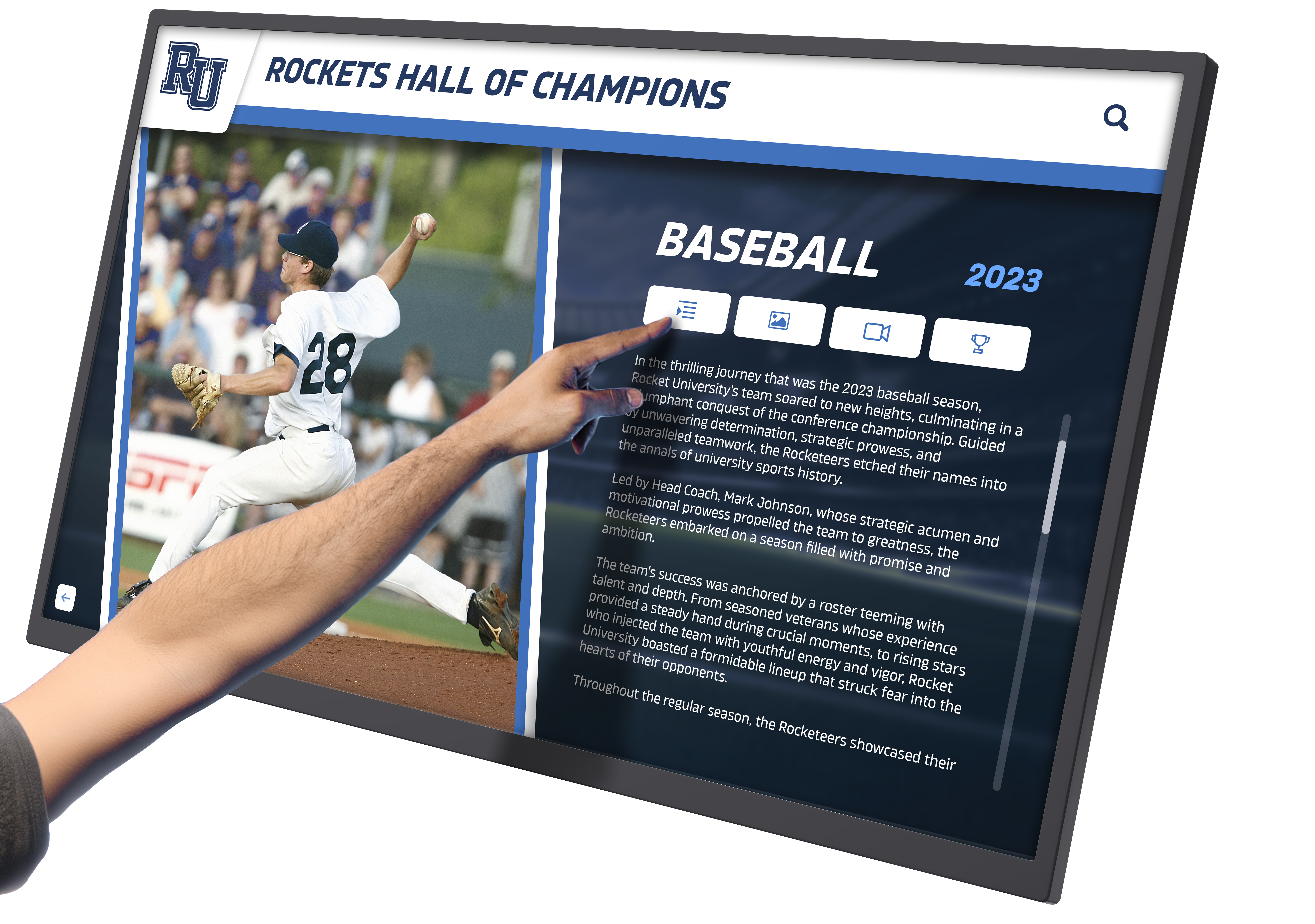
Milestone-based recognition provides systematic frameworks ensuring consistent volunteer acknowledgment while creating aspirational goals encouraging continued service as volunteers work toward next recognition levels.
Implementation Planning for Volunteer Recognition Displays
Successful recognition display implementation requires careful planning addressing location, budget, content development, and ongoing management.
Selecting Optimal Display Locations
Where recognition displays are positioned dramatically influences visibility, engagement, and recognition effectiveness.
High-Traffic Locations: Priority locations include main entrance lobbies where volunteers, staff, beneficiaries, and visitors pass regularly, reception areas where guests wait, volunteer check-in areas where volunteers begin service, community rooms where meetings and events occur, and hallways connecting high-use spaces.
Visibility and Accessibility: Displays require clear sight lines from major pathways attracting attention, adequate stopping space for multiple viewers to gather comfortably, appropriate lighting ensuring visibility without glare, accessible mounting heights complying with ADA requirements, and environmental protection from weather for outdoor or semi-exposed placements.
Multiple Display Strategies: Organizations with multiple locations, large facilities, or geographically dispersed operations may benefit from multiple recognition displays. Identical content across installations ensures equitable access regardless of which facility volunteers frequent, while location-specific content can recognize volunteers primarily serving particular sites or programs.
Digital platforms make multi-location deployment practical through centralized content management updating all displays simultaneously from single sources.
Budget Planning and Cost Considerations
Realistic budget planning ensures recognition displays receive adequate resources for proper implementation and sustainable operation.
Initial Investment Components:
- Display hardware (touchscreen): $1,500-$5,000
- Mounting system or kiosk enclosure: $250-$1,500
- Media player/computer: $500-$1,500
- Professional installation: $400-$1,000
- Software platform (first year): $1,000-$3,500
- Initial content development: $2,000-$8,000
- Total Initial: $5,650-$20,500
Ongoing Annual Costs:
- Software licensing and hosting: $800-$2,500
- Content management time: $1,000-$3,000
- Hardware maintenance: $300-$600
- Network and power: $150-$400
- Content updates and enhancements: $800-$2,000
- Total Annual: $3,050-$8,500
Funding Sources: Nonprofit volunteer recognition displays can be funded through operating budgets, grant funding from foundations supporting volunteer programs, corporate sponsorships from businesses supporting community service, donor-restricted funds designated for volunteer support, volunteer appreciation event budgets reallocated toward lasting recognition, or capital campaigns including recognition infrastructure.
Many organizations discover that volunteer recognition represents strategic investment rather than expense, with improved retention reducing ongoing recruitment costs while enhanced engagement increasing volunteer productivity and organizational capacity.
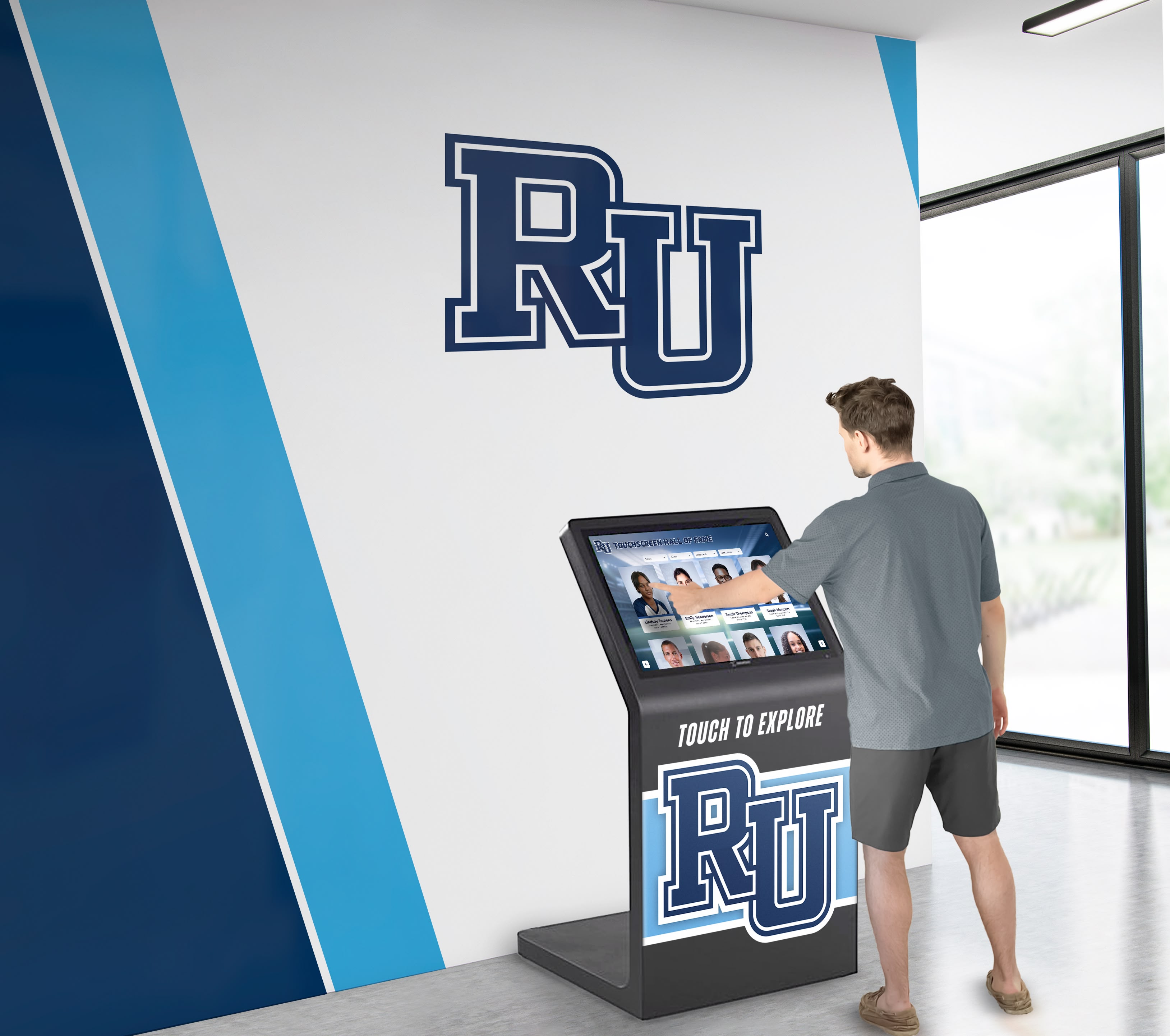
Solutions designed specifically for nonprofit and volunteer recognition, such as Rocket Alumni Solutions, provide cost-effective platforms with pricing models accommodating nonprofit budgets while delivering sophisticated functionality typically requiring expensive custom development.
Content Development Process and Timeline
Launching recognition displays with comprehensive content requires systematic development processes and realistic timelines.
Phase 1: Planning (Weeks 1-2) Identify which volunteers to feature initially, develop volunteer profile templates and content standards, create information collection forms, schedule photography sessions, and establish content review and approval processes.
Phase 2: Information Collection (Weeks 3-6) Distribute volunteer information forms requesting biographical details and service descriptions, conduct volunteer interviews for narrative content, schedule and complete photography, gather existing photos and documentation, collect testimonials from beneficiaries and colleagues, and compile service hour records and achievement data.
Phase 3: Content Creation (Weeks 7-10) Write biographical content for each volunteer profile, edit and process photographs professionally, record and edit video content when included, organize testimonial collections, review all content for accuracy and consistency, and ensure compliance with privacy and consent requirements.
Phase 4: Review and Refinement (Weeks 11-12) Volunteer review and approval of individual profiles, organizational leadership review ensuring policy compliance, final edits and corrections, complete content loading into software platform, comprehensive testing of features and navigation, and staff training on content management procedures.
Realistic Timeline: Organizations should plan minimum 12-16 weeks from project initiation to public launch for thorough content development. Rushed implementations with incomplete content diminish recognition impact while creating post-launch remediation requirements.
Content development represents the most time-intensive recognition display component, though careful planning distributes work across timelines preventing overwhelming concentrated efforts.
Privacy, Consent, and Ethical Considerations
Responsible volunteer recognition requires attention to privacy, consent, and ethical considerations protecting volunteer interests.
Volunteer Consent: Obtain explicit permission before featuring volunteers prominently in public recognition displays. Professional ethics require consent for recognition content, particularly for photographs, video content, biographical information beyond basic service descriptions, and testimonials connecting specific volunteers to appreciation messages.
Most volunteers enthusiastically consent when recognition is presented positively and respectfully, but consent processes demonstrate respect while allowing volunteers to review content for accuracy and comfort.
Content Boundaries: Establish clear policies about appropriate recognition content focusing on volunteer service and accomplishments, avoiding potentially embarrassing personal information, respecting cultural and religious sensitivities, maintaining professional tone avoiding overly casual content, and protecting volunteer privacy regarding contact information or sensitive personal details.
Handling Volunteer Departures: Develop policies addressing how recognition displays treat volunteers who discontinue service, resign, or leave organizations under difficult circumstances. Many organizations maintain permanent recognition of past service while adjusting volunteer status indicators from “active” to “alumni” or similar designations.
Best Practices for Volunteer Recognition Display Management
Ongoing management ensures recognition displays maintain relevance, accuracy, and engagement beyond initial launch enthusiasm.
Maintaining Content Currency
Stale content diminishes engagement and undermines recognition purposes. Sustainable displays require processes ensuring:
- New volunteer additions promptly after joining programs
- Regular profile updates for volunteers receiving awards or achieving milestones
- Current photographs refreshed every 2-3 years
- Fresh testimonial additions preventing repetitive content
- Seasonal content variations maintaining visual interest
- Adjusted status for volunteers transitioning from active to alumni
Organizations should designate specific staff members or volunteer coordinators responsible for content management, establishing clear accountability preventing displays from becoming outdated when initial champions move on.
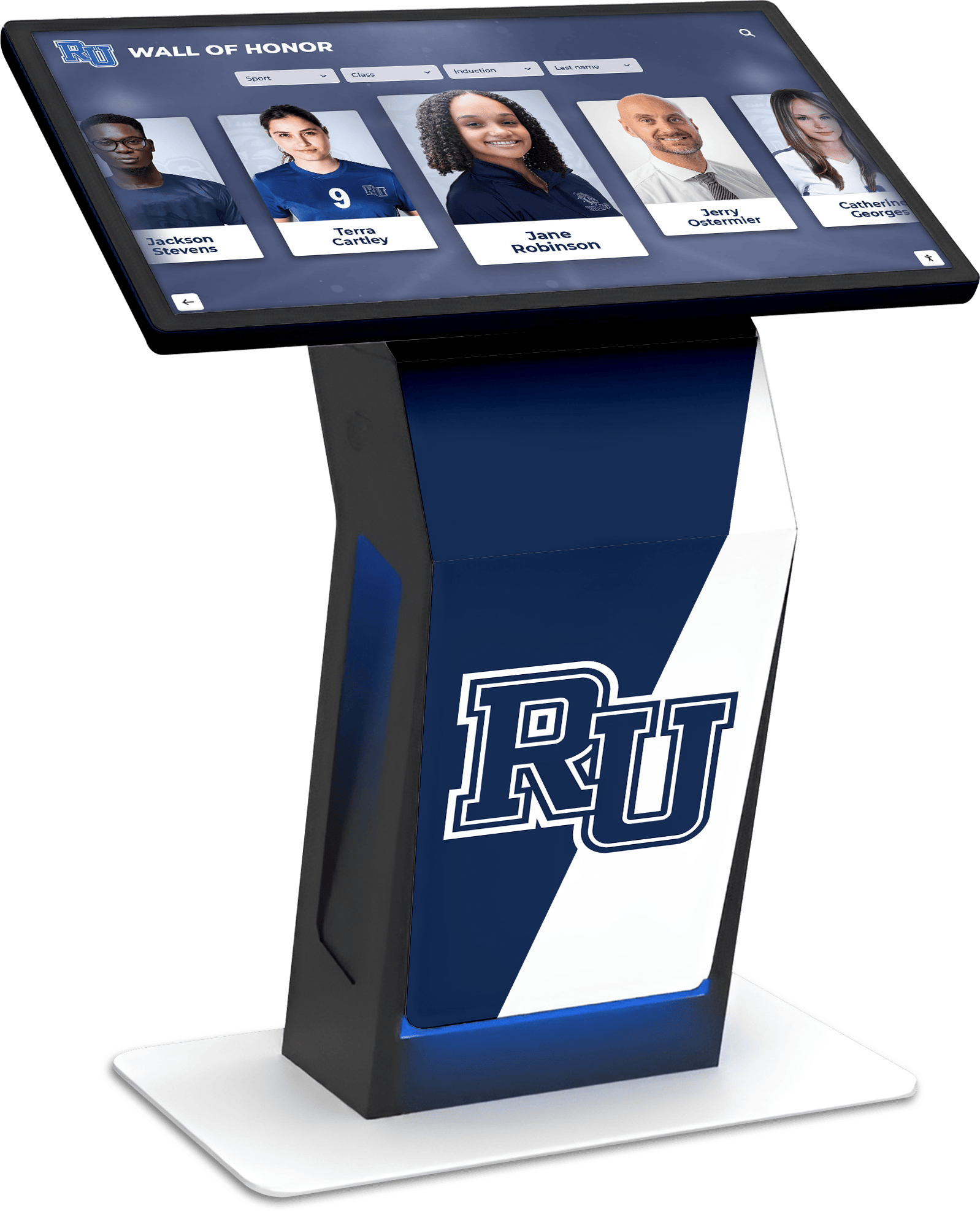
Integrating Recognition with Volunteer Programs
Recognition displays work best integrated into comprehensive volunteer engagement strategies rather than operating as standalone initiatives.
Recruitment Integration: Reference recognition displays in volunteer recruitment materials, include display photos in recruiting presentations, mention recognition programs during volunteer orientations, and use volunteer profiles as recruiting examples showing potential volunteers people like themselves contributing.
Onboarding and Training: Introduce new volunteers to recognition displays during orientations, explain how volunteers can eventually be featured, set expectations about recognition timelines and processes, and use existing volunteer profiles as training examples illustrating service excellence.
Ongoing Engagement: Feature recognition displays during volunteer appreciation events, create regular communications highlighting newly added profiles, encourage volunteers to invite family and friends to view their recognition, integrate recognition into volunteer newsletters and communications, and celebrate recognition milestones during volunteer gatherings.
Exit and Alumni Relations: Update recognition profiles for departing volunteers acknowledging cumulative service, maintain alumni volunteer profiles honoring past contributions, create opportunities for alumni volunteers to remain engaged with organizations, and use alumni recognition to encourage continued support through donations or occasional service.
Measuring Recognition Display Impact
Assessment ensures recognition displays create intended benefits while identifying improvement opportunities.
Engagement Metrics: Modern recognition software tracks valuable usage data including daily interaction counts, average engagement time per session, most-viewed volunteer profiles, popular features and content types, search queries and browsing patterns, and peak usage times.
Engagement data reveals how visitors actually use recognition displays versus designer assumptions, informing content and feature improvements based on observed behavior.
Volunteer Program Metrics: Connect recognition initiatives to volunteer program outcomes including retention rates comparing recognized versus non-recognized volunteers, volunteer satisfaction survey results, recruitment effectiveness and applicant quality, volunteer referral rates showing volunteers recruiting others, and hours contributed by volunteers receiving recognition versus those not featured.
While isolating recognition impact from other program factors proves difficult, longitudinal assessment can reveal correlations suggesting recognition effectiveness.
Qualitative Feedback: Gather feedback from featured volunteers about recognition experiences, collect reactions from volunteers not yet featured expressing whether recognition motivates continued service, survey organizational stakeholders about recognition value perceptions, observe visitor interactions with displays in natural settings, and collect stories illustrating how recognition influenced volunteer behavior or organizational culture.
For comprehensive guidance on evaluating recognition programs, explore approaches for measuring digital hall of fame success applicable to volunteer recognition contexts.
Industry-Specific Volunteer Recognition Applications
Different organizational contexts create unique volunteer recognition needs and opportunities.
Nonprofit and Charitable Organizations
Traditional nonprofits rely heavily on volunteers for service delivery, advocacy, fundraising, and governance.
Recognition displays in nonprofit settings typically acknowledge direct service volunteers supporting core missions, board members and governance volunteers providing leadership, fundraising volunteers supporting development activities, administrative volunteers handling operational functions, and special event volunteers contributing during campaigns or programs.
Nonprofit volunteer recognition often emphasizes mission connection, highlighting how individual volunteer service contributes to organizational outcomes and beneficiary impact. For guidance on nonprofit-specific approaches, examine employee recognition touchscreen displays with principles translating to volunteer contexts.
Faith-Based and Religious Organizations
Religious institutions and faith-based organizations balance volunteer recognition with theological perspectives on service, humility, and appropriate acknowledgment.
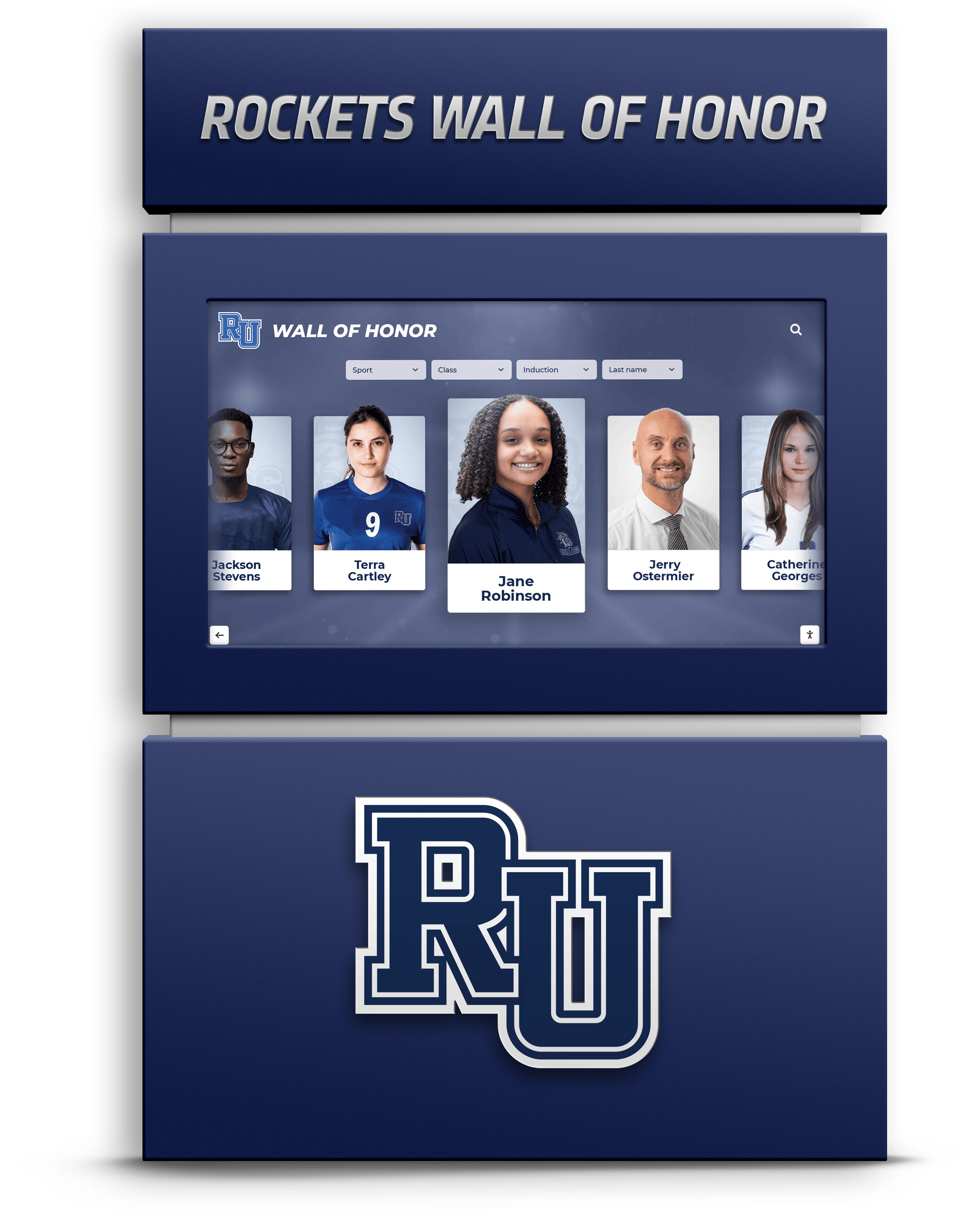
Faith community recognition might include ministry volunteers serving congregational needs, outreach volunteers supporting community service programs, religious education volunteers teaching classes, worship volunteers supporting services, facilities volunteers maintaining buildings and grounds, and administrative volunteers handling organizational functions.
Faith-based recognition must navigate theological perspectives ensuring acknowledgment aligns with teachings about service motivation, humility, and appropriate versus inappropriate pride. Thoughtful approaches celebrate contribution and model behavior while maintaining spiritual framing appropriate to faith traditions.
Educational Institutions
Schools, colleges, and universities rely on volunteers for enrichment programs, fundraising, facilities support, and student services.
Educational volunteer recognition acknowledges classroom volunteers assisting teachers, library volunteers supporting media centers, enrichment program volunteers leading clubs and activities, athletic volunteers coaching and supporting teams, facilities volunteers improving campuses, and fundraising volunteers supporting school foundations.
School-based recognition provides additional benefits by modeling service excellence for students while connecting families to school communities through visible volunteer appreciation.
Healthcare and Medical Settings
Hospitals, clinics, and healthcare organizations utilize volunteers for patient support, wayfinding, administrative assistance, and specialized services.
Healthcare volunteer recognition celebrates patient support volunteers providing companionship, wayfinding volunteers assisting visitors, gift shop volunteers supporting auxiliary operations, administrative volunteers handling clerical functions, specialized volunteers like pet therapy handlers, and fundraising volunteers supporting hospital foundations.
Healthcare settings must navigate privacy regulations ensuring volunteer recognition doesn’t inadvertently compromise patient confidentiality while celebrating service contributions.
Civic and Municipal Organizations
Government entities, civic organizations, and community institutions recognize volunteers supporting public services, community improvement, and civic engagement.
Civic volunteer recognition might acknowledge advisory board and commission volunteers providing governance, beautification volunteers improving public spaces, event volunteers supporting community celebrations, emergency volunteers assisting during disasters, library volunteers supporting public libraries, and civic engagement volunteers promoting participation. Organizations can learn from community hall of fame approaches applicable to civic volunteer recognition.
Conclusion: Investing in Recognition That Honors Service
Volunteers represent the extraordinary individuals who give their time, expertise, and passion without financial compensation, driven by commitment to missions they believe in and communities they care about. They tutor struggling students, feed hungry families, comfort isolated seniors, protect natural environments, build affordable housing, staff crisis hotlines, serve on boards, coach youth teams, raise funds, advocate for causes, and perform countless acts of service that strengthen communities and advance nonprofit missions.
This extraordinary contribution deserves recognition matching its significance. Volunteer and service recognition displays provide organizations with powerful platforms to honor contributors with professional, engaging, permanent tributes that celebrate service while strengthening volunteer cultures where individuals feel genuinely valued.
The investment in volunteer recognition technology represents more than displays and software—it demonstrates organizational commitment to the people who make mission fulfillment possible. It tells volunteers “You matter. Your service is seen. Your contributions are celebrated. You are valued.” In an era of volunteer shortages and retention challenges, these messages carry extraordinary weight.
Key Success Factors for Volunteer Recognition Displays:
- Feature diverse volunteers across all service categories with equitable content quality
- Include rich multimedia showcasing volunteers’ personalities and mission impact
- Maintain current content through defined management processes and responsibilities
- Integrate displays into comprehensive volunteer engagement and retention strategies
- Measure engagement and continuously improve based on volunteer feedback
- Protect privacy and obtain appropriate consent while celebrating service publicly
- Connect recognition to recruitment, retention, and organizational culture goals
- Balance celebration with humility appropriate to organizational values
Ready to transform volunteer recognition in your organization? Modern digital recognition solutions like Rocket Alumni Solutions provide purpose-built platforms designed specifically for nonprofit and volunteer recognition, offering intuitive content management, professional templates, interactive features, and ongoing support that makes honoring volunteers both meaningful and sustainable.
Your volunteers give their time, energy, and hearts to your mission. They deserve recognition that matches their extraordinary contribution—recognition that lasts, inspires, and demonstrates the genuine appreciation their service has earned.




































